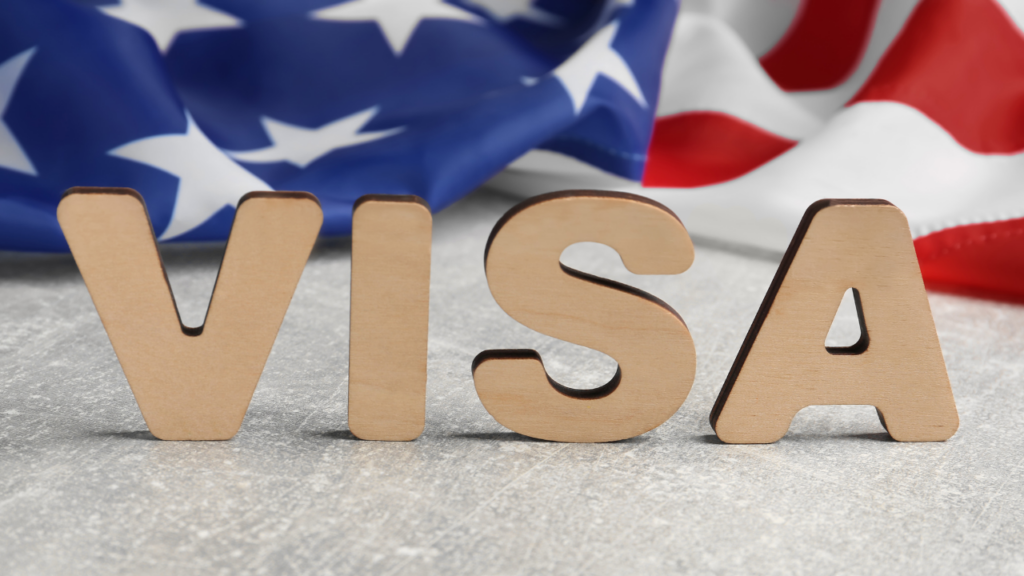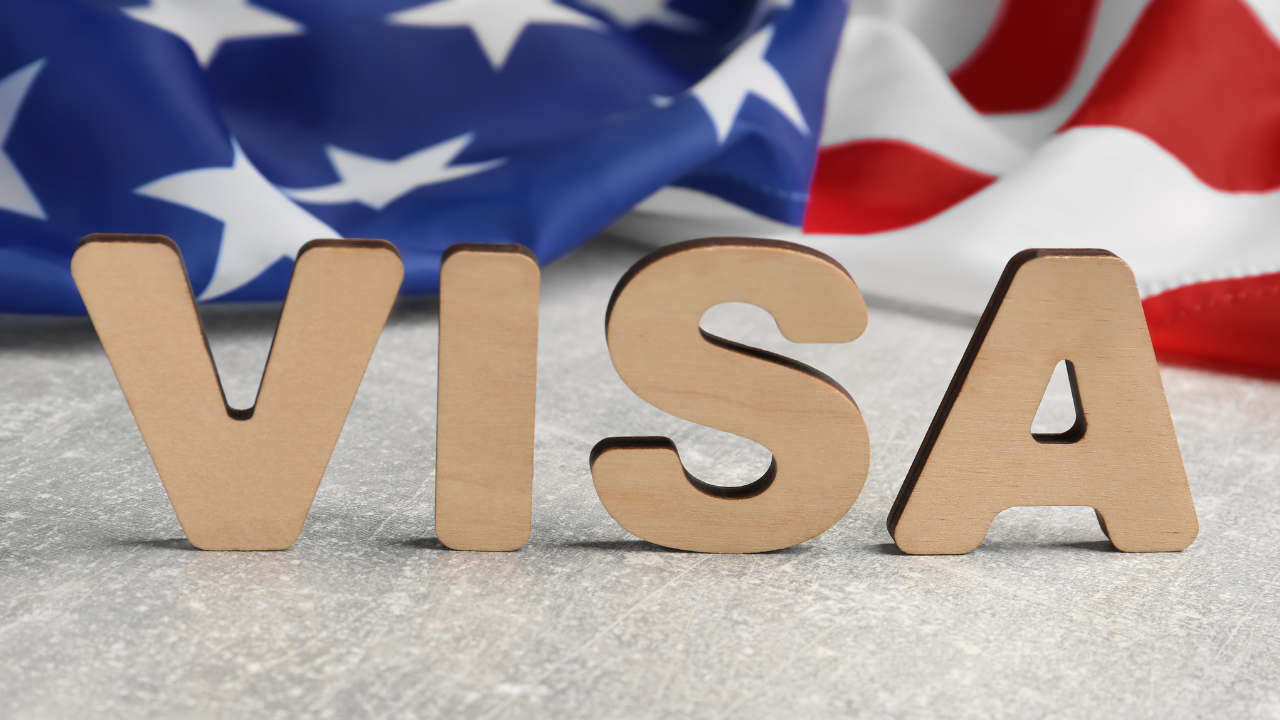Welcome to our comprehensive U.S. Visa Selection Flowchart Guide, designed to simplify the often overwhelming process of choosing the right U.S. visa and submit the proper application. Navigating through the various visa options and understanding the visa requirements can be a daunting task. That’s why we’ve created this guide, complete with a flowchart that will help you make accurate and informed visa selections based on your specific needs and circumstances.
This flowchart takes into account various factors such as travel intent, eligibility criteria, and documentation requirements, ensuring that you have a clear path to follow. By following the flowchart, you’ll be able to identify the most suitable visa category and understand the steps involved in the visa application process.

Key Takeaways:
- The U.S. Visa Selection Flowchart Guide simplifies the process of choosing the right U.S. visa.
- By following the flowchart, individuals can navigate through visa options and determine the most suitable visa category.
- Factors such as travel intent, eligibility criteria, and documentation requirements are considered in the flowchart.
- The flowchart will guide you step-by-step, ensuring accurate visa selection and understanding the visa application process.
- Understanding the visa system and following proper procedures are crucial for a successful U.S. visa application.
Understanding the U.S. Visa System
Aspiring travelers and immigrants to the United States must have a solid understanding of the U.S. visa system before embarking on their journey. This section provides an overview of the different visa types available, their purposes, and the importance of accurate visa selection.
Overview of Visa Types and Their Purposes
The U.S. visa system offers a range of visa types tailored to specific travel intentions. These visa types include tourist visas, student visas, work visas, and immigrant visas. Each visa category serves a distinct purpose and has unique eligibility requirements. Understanding the purpose of each visa type is crucial when determining the most suitable visa for your needs.
Let’s take a closer look at some of the common U.S. visa types:
- Tourist Visa (B1/B2): Allows individuals to visit the U.S. for tourism, pleasure, or medical treatment.
- Student Visa (F1/M1/J1): Designed for international students pursuing academic or vocational studies in the U.S.
- Work Visa (H1B/L1/O1): Enables foreign workers to legally work in the U.S. for a specific employer and job.
- Immigrant Visa (Family-Based/Employment-Based): Grants permanent residency to individuals who intend to live and work permanently in the U.S.
Common Misconceptions About U.S. Visas
There are several misconceptions surrounding U.S. visas that can lead to confusion and misunderstandings. It’s crucial to address these misconceptions to ensure accurate information:
- Visas guarantee entry into the U.S.: Having a visa doesn’t guarantee entry into the U.S. Admission is determined by U.S. Customs and Border Protection (CBP) officials at the port of entry.
- All visas lead to permanent residency: Not all visa types lead to permanent residency in the U.S. Each visa category has its own rules and requirements regarding long-term stay or permanent residency eligibility.
- Visas can be obtained immediately: The visa application process takes time. It involves several steps, including document preparation, interview scheduling, and administrative processing.
The Importance of Accurate Visa Selection
Accurate visa selection is crucial to ensure compliance with U.S. immigration laws and to avoid potential issues during the visa application process. Choosing the right visa based on individual circumstances and travel intentions minimizes the risk of visa denial, delays, or rejections.
It’s recommended to seek professional guidance or consult the official U.S. government resources when selecting a visa category. Understanding the purpose and requirements of each visa type empowers individuals to make informed decisions and navigate the U.S. visa system efficiently.
Flowchart – Choosing the Right U.S. Visa
The flowchart presented below offers a visual representation of the step-by-step process to help individuals select the most suitable U.S. visa for their needs. By following this flowchart, individuals can simplify the visa selection process and gain a clear understanding of the steps involved in obtaining their desired visa.
- Start
- Identify your travel intent (e.g., tourism, education, work, etc.)
- Assess your eligibility based on the requirements for each visa category
- Determine the visa options available for your eligibility criteria
- Consider the specific requirements, limitations, and benefits of each visa option
- Select the visa category that best aligns with your travel intent and meets your eligibility
- Review the visa process for the chosen category to understand the required documentation and application steps
- Submit your visa application along with the necessary documentation
- Attend the visa interview (if applicable)
- Await the visa decision
- Visa Approved
- End
By following the flowchart and considering the factors mentioned, individuals can efficiently navigate the visa selection process and increase their chances of obtaining the most appropriate U.S. visa.
Steps to Determine Your Visa Eligibility
In order to successfully apply for a U.S. visa, it is crucial to determine your visa eligibility. This section outlines the steps you need to take to assess your eligibility and identify the appropriate visa category for your travel intent. Additionally, it introduces the Visa Wizard Tool, which provides valuable assistance in identifying eligible visa options based on your personal circumstances. Let’s dive in!
Assessing Your Travel Intent
Before determining your visa eligibility, it is important to assess your travel intent. The purpose of your visit to the United States will play a significant role in identifying the appropriate visa category. Are you planning to visit as a tourist, study at a U.S. educational institution, work for a U.S. employer, or join a family member who is already residing in the country?
By carefully evaluating your travel intent, you can narrow down the visa options that align with your specific needs and goals.
Eligibility Criteria for Different Visa Categories
Each visa category has its own set of eligibility criteria that must be met in order to qualify. For example, if you are applying for a student visa, you may need to provide evidence of acceptance to a U.S. educational institution and proof of financial capability to cover your expenses during your studies.
It is essential to familiarize yourself with the eligibility criteria for the visa category you are interested in. Determine whether you meet the requirements in terms of education, work experience, financial resources, and any other specific criteria outlined by the U.S. immigration authorities.
Utilizing the Visa Wizard Tool
To assist you in identifying eligible visa options based on your personal circumstances, the Visa Wizard Tool is a valuable resource. This online tool guides you through a series of questions to determine the most suitable visa categories for your situation.
The Visa Wizard Tool takes into account factors such as your purpose of travel, length of stay, and personal background. By answering the questions accurately, you can receive tailored visa recommendations that match your eligibility.
Utilize the Visa Wizard Tool to simplify the visa selection process and ensure you are on the right track towards securing the appropriate U.S. visa.
Documentation and Requirements for U.S. Visa Application
This section provides valuable information on the documentation and requirements necessary for a successful U.S. visa application. Understanding these requirements is crucial to ensure a smooth application process and increase the chances of approval.
When applying for a U.S. visa, there are several key documents that applicants must provide:
- Valid Passport: A valid passport that will remain valid for their entire stay in the United States. It is important to ensure that the passport has at least six months of validity beyond the intended period of stay.
- Completed Application Forms: Applicants must complete and submit the appropriate visa application forms. These forms can be obtained from the official U.S. Department of State website or the respective U.S. embassy/consulate website.
- Supporting Documentation: Applicants must provide supporting documents to establish their eligibility for the chosen visa category. This may include financial statements, employment letters, educational transcripts, or other relevant documents.
- Visa Photographs: Applicants are required to provide recent photographs that meet the specific requirements outlined by the U.S. Department of State. These requirements include the size, background color, and specific facial expression.
Please note that the specific documentation requirements may vary depending on the type of visa being applied for. It is essential to thoroughly review the requirements for the specific visa category to ensure all necessary documents are prepared.
Additionally, applicants must keep in mind that providing fraudulent or counterfeit documents may lead to visa denial and potentially affect future visa applications.
To gain further insight into the required documentation for each visa category, it is advisable to consult the official website of the U.S. Department of State or reach out to the respective U.S. embassy/consulate.

Having all the required documentation prepared and organized ahead of time is essential for a smooth U.S. visa application process. By ensuring compliance with the documentation requirements, applicants can increase their chances of a successful visa application and avoid unnecessary delays or complications.
Understanding the Immigration Process
When it comes to obtaining a U.S. visa, understanding the immigration process is crucial. Navigating the various steps and agencies involved can be complex, but having a clear understanding of how it all works can help streamline the process. In this section, we will explore two key players in the immigration process: the United States Citizenship and Immigration Services (USCIS) and the consulates and embassies.
The Role of USCIS in the Visa Process
The United States Citizenship and Immigration Services (USCIS) plays a vital role in the U.S. visa process. As part of the Department of Homeland Security (DHS), the USCIS oversees immigration-related matters within the United States. Their responsibilities include adjudicating visa petitions, conducting background checks, and processing applications for various immigration benefits, including visas.
The USCIS is responsible for reviewing and approving or denying visa petitions, such as employment-based visas, family-based visas, and certain humanitarian visas. They also provide information and guidance to individuals and employers regarding visa requirements, documentation, and eligibility criteria.
It is important to note that USCIS adjudicates visa petitions filed within the United States, while consulates and embassies handle visa applications submitted by individuals residing outside the country.
How Consulates and Embassies Fit Into the Picture
Consulates and embassies play a crucial role in the visa application process, especially for individuals residing outside of the United States. They serve as the primary points of contact for visa applicants and are responsible for processing visa applications, conducting interviews, and issuing visa approvals.
Consulates and embassies are located in various countries around the world, and they work closely with the USCIS to ensure the smooth processing of visa applications. They review the supporting documents, conduct interviews to assess the eligibility of applicants, and make decisions regarding visa issuance.
Having a clear understanding of the roles of both USCIS and consulates and embassies can help individuals navigate the visa process more effectively. By knowing where to submit their applications and which agency to contact for specific immigration matters, individuals can ensure that their visa journey is efficient and successful.
Navigating the Visa Application Process
Completing a visa application and preparing for the visa interview can be daunting tasks. However, with the right guidance, you can navigate the visa application process smoothly.
Steps to Complete Your Visa Application
When it comes to completing your visa application, there are several important steps to keep in mind:
- Start by gathering all the necessary documentation, such as your valid passport, application forms, and supporting evidence of your eligibility.
- Ensure that you fill out the application forms accurately and provide all required information.
- Double-check your application for any errors or omissions before submitting it.
- Pay the application fee, if applicable, following the instructions provided.
- Submit your application through the designated channels, whether online or at a consulate/embassy.
By following these steps, you can complete your visa application with confidence.
Scheduling and Preparing for the Visa Interview
The visa interview is a crucial part of the application process, as it allows the consular officer to assess your eligibility and intentions. Here are some tips to help you schedule and prepare for your visa interview:
- Make sure to schedule your visa interview in advance, as appointment availability can vary.
- Review the interview requirements and any additional documents you may need to bring.
- Prepare your answers to commonly asked interview questions to articulate your travel intentions and eligibility clearly.
- Dress professionally and arrive at the interview location early to avoid any unnecessary stress.
- Bring all the required documents and supporting evidence to the interview.
By scheduling and preparing for your visa interview diligently, you can increase your chances of a successful outcome.
What to Expect During the Visa Interview
The visa interview can understandably be nerve-wracking, but being aware of what to expect can help ease your anxiety. During the interview, the consular officer may ask you questions about your travel intentions, ties to your home country, and your eligibility for the visa category you are applying for. It is essential to answer truthfully and provide any requested documents promptly.
Remember to remain calm, confident, and respectful throughout the interview. Your demeanor and preparedness can make a positive impression on the consular officer.
Navigating the visa application process may require careful attention to detail, but with the right information and preparation, you can approach it with confidence. By completing your visa application accurately, scheduling and preparing for your visa interview, and understanding what to expect during the interview, you can increase your chances of a successful visa application.
Common Questions and Issues With Visa Guidance
This section aims to address common questions and issues that individuals may encounter during the visa process. Below, you will find answers to frequently asked questions related to visa requirements, application procedures, and potential challenges. Our goal is to offer clarity and alleviate concerns by providing helpful guidance to navigate through the visa application process smoothly.
1. What are the common visa requirements?
Visa requirements vary depending on the type of visa you are applying for. However, some common documents and information often required include:
- A valid passport
- Completed visa application form
- Proof of financial capability to cover travel expenses
- Travel itinerary
- Supporting documents, such as invitation letters or employment letters
2. How long does the visa application process usually take?
The visa application process duration can vary depending on several factors, such as the type of visa and the workload of the consulate or embassy. In general, it is advisable to apply well in advance to allow sufficient time for processing.
3. What should I do if my visa application gets denied?
If your visa application is denied, it is essential to understand the reason behind the denial. You may have the option to reapply with additional supporting documents or seek legal advice to explore alternative solutions. It is recommended to consult with an immigration attorney or an expert in visa matters for guidance.
4. What if I need to extend my stay in the United States?
If you need to extend your stay in the United States beyond the authorized period stated on your visa, you may be eligible to file an extension request. It is crucial to submit this request before your current visa expires to avoid any legal complications. Consult with the USCIS or an immigration attorney for detailed guidance on the extension process.
5. What common issues might arise during the visa interview?
During the visa interview, common issues that may arise include difficulty in providing satisfactory answers to the consular officer’s questions, incomplete documentation, or lack of clarity regarding travel intentions. It is important to be prepared, answer questions honestly, and provide all required documents to increase your chances of a successful visa interview.
“Proper visa guidance can make all the difference in navigating the complexities of the visa process.” – Jane Smith, Immigration Attorney
Conclusion
In conclusion, navigating the U.S. visa process can seem daunting, but with the right understanding and approach, individuals can successfully select and apply for the appropriate visa. The key to a successful visa application lies in accurate visa selection. By thoroughly understanding the U.S. visa system and its various categories, individuals can choose the visa that aligns with their travel intent and eligibility criteria.
Throughout this guide, we have emphasized the importance of following the proper visa application procedures and gathering the necessary documentation. Attention to detail is crucial, as even minor errors or omissions can lead to delays or denials. By carefully following the steps outlined in the flowchart and understanding the specific requirements for each visa category, applicants can streamline their visa application process.
We understand that the U.S. visa process may still seem complex, but we encourage you to stay positive and determined. The visa application process opens doors to numerous opportunities, whether it’s for travel, education, work, or immigration. By successfully obtaining your desired U.S. visa, you can embark on a new journey and explore the vast possibilities that await you in the United States.
FAQ
What is the U.S. Visa Selection Flowchart Guide?
The U.S. Visa Selection Flowchart Guide is a comprehensive overview of the visa selection process. It simplifies the process of choosing the right U.S. visa by using a flowchart. The flowchart considers factors such as travel intent, eligibility criteria, and documentation requirements to help individuals determine the most suitable visa for their needs.
Why is understanding the U.S. visa system important?
Understanding the U.S. visa system is crucial for individuals seeking to travel or immigrate to the United States. This knowledge allows individuals to comprehend the different visa types available and their purposes, dispelling common misconceptions. Accurate visa selection ensures compliance with U.S. immigration laws and helps avoid potential issues during the application process.
How can the flowchart assist in choosing the right U.S. visa?
The flowchart in the guide provides a step-by-step process to determine the most suitable U.S. visa. It considers factors such as travel intent, eligibility criteria, and specific visa options available. By using the flowchart, individuals can simplify the visa selection process and gain a clear understanding of the steps involved in obtaining the desired visa.
How can I determine my visa eligibility?
Determining visa eligibility is essential in the application process. Assessing your travel intent and understanding the eligibility criteria for different visa categories are crucial steps. You can also utilize the Visa Wizard Tool, an online resource that assists individuals in identifying eligible visa options based on their personal circumstances.
What documents are required for a U.S. visa application?
The documentation and requirements for a U.S. visa application may vary depending on the visa category. However, it generally includes a valid passport, completed application forms, and supporting evidence of eligibility. It is crucial to understand the specific documentation needed for each type of visa to ensure a smooth application process.
What is the role of USCIS in the visa process?
The United States Citizenship and Immigration Services (USCIS) plays a vital role in the visa process. They are responsible for processing visa applications and conducting background checks on applicants. USCIS also provides various immigration services and administers naturalization and citizenship processes.
How do consulates and embassies fit into the visa application process?
Consulates and embassies are integral to the visa application process. They are responsible for processing visa applications, conducting interviews, and issuing visa approvals. Consular officers review the applications and make determinations based on the immigration laws and regulations of the United States.
What are the steps involved in completing a visa application?
Navigating the visa application process involves several steps. These include completing the necessary forms, gathering required documents, and paying the application fee. It is essential to carefully follow the instructions provided by the U.S. embassy or consulate and ensure that all documentation is accurate and complete.
What should I expect during the visa interview?
During the visa interview, you can expect to be asked questions about your purpose of travel, ties to your home country, and plans during your stay in the United States. It is important to be prepared, dress professionally, and bring all necessary documents. The interview aims to determine your eligibility and intentions for traveling to the United States.
What are common questions and issues with visa guidance?
Common questions and issues individuals may encounter during the visa process include inquiries about specific documentation requirements, application procedures, and potential challenges they may face. It is essential to seek reliable guidance and information to address these concerns effectively and navigate the visa application process successfully.

